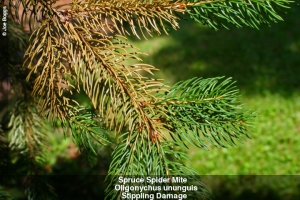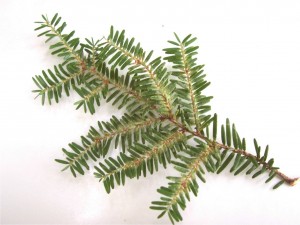Spider Mites


Spider mites are a part of the arachnid family. While most spiders feed on insects that they trap in webs these insects feed on the chlorophyll of their host trees. While spider mites can be found on many species of trees the vast majority of infestations happen on pine trees. In specific the worst cases tend to be on arborvitae bushes. The picture to the right is of spider mite damage on a spruce tree. The damage tends to effect older growth within a branch and can be found on low lying branches. Spider mites are very small and hard to locate on a tree. One of two things can be done to know if you in fact have spider mites.
If the case of mites is active then a paper test is done to detect these insects. To perform this test take an area that has feeding signs and shake the area over a piece of white paper. If the tree has spider mites you will see small spots moving around the paper.
A good way to spot spider mite damage on an arborvitae is to look for random dying branches scattered through the bush randomly. Mites like other pests work in large masses and infest areas of the tree to feed and reproduce.
Treatment
The most common treatment type for mites is spraying. Timing is important and proper chemicals must be used to control the right kind of insect. In the case of spraying contact killing the pest is the most important thing. Follow up sprays will need to be done to keep the pest at acceptable numbers in a host plant. Another method would be a systemic approach. These treatments would need to be done before the insects active feeding time. Methods include base drenching and trunk injections with the latter being the most common.